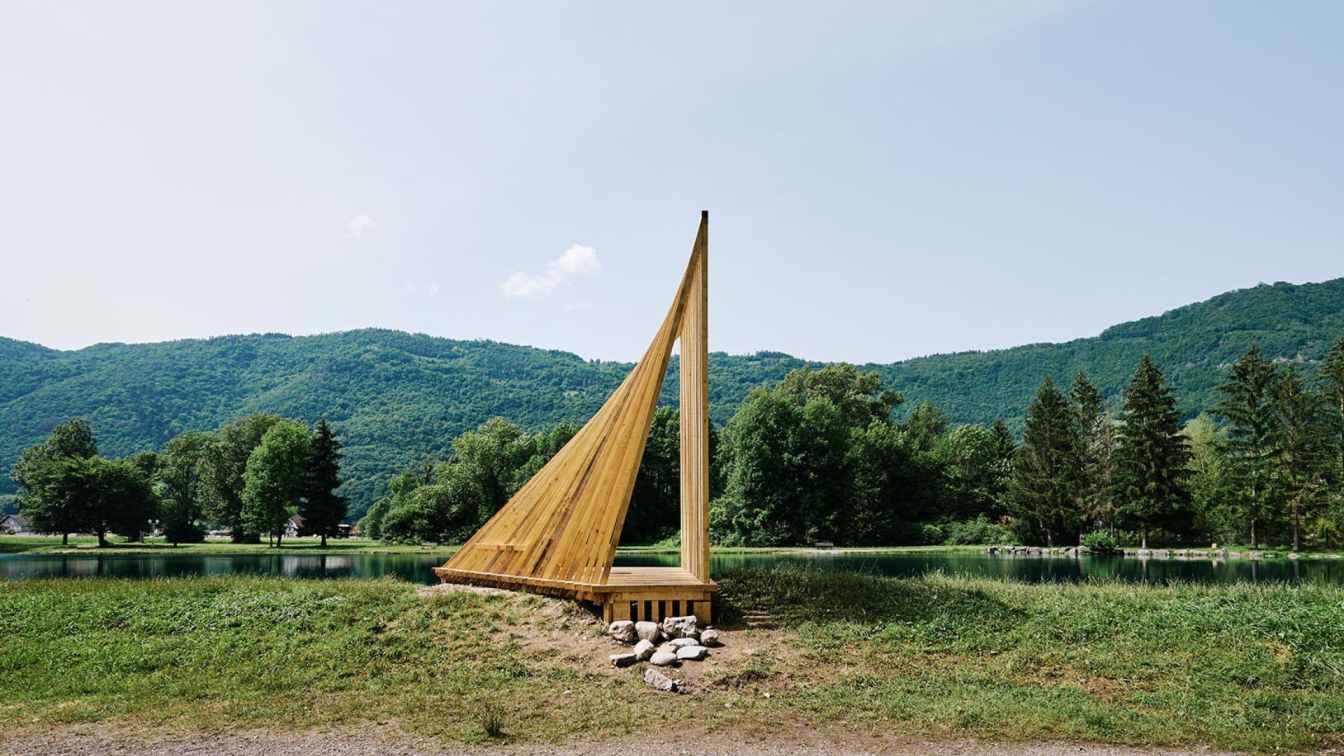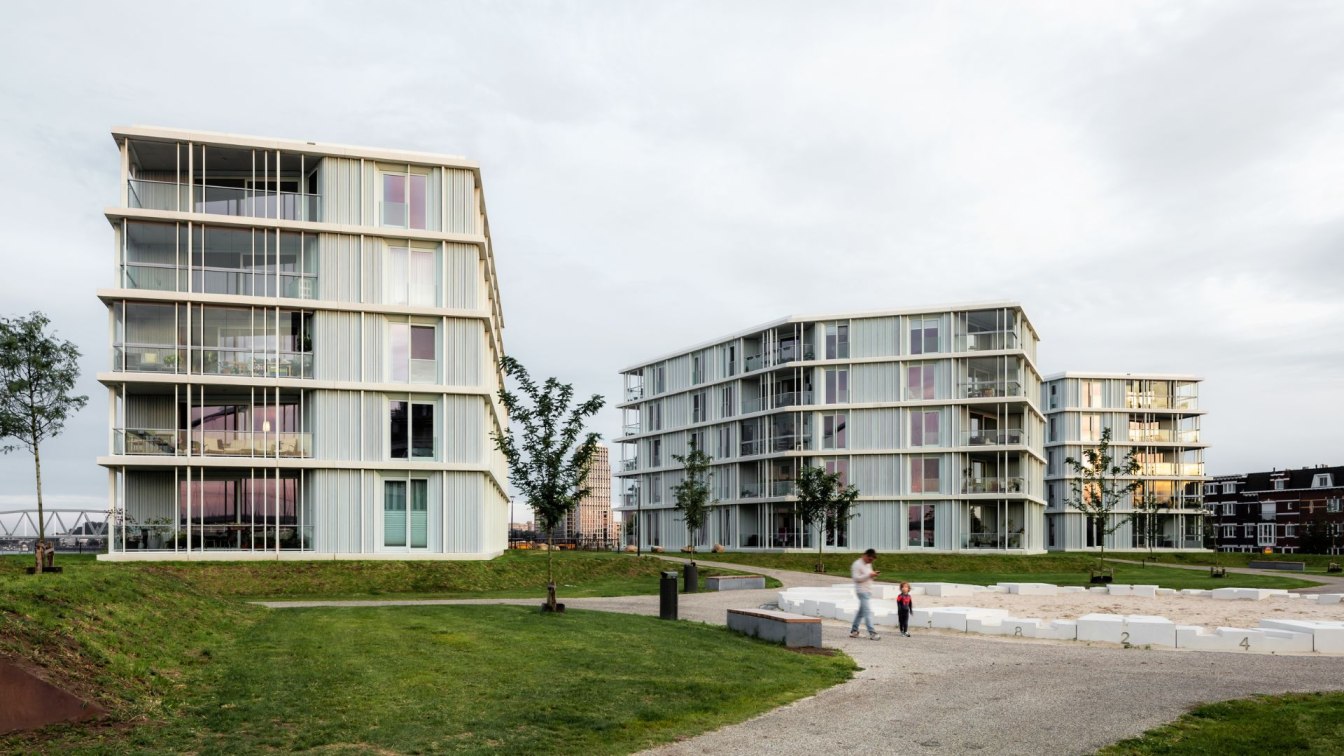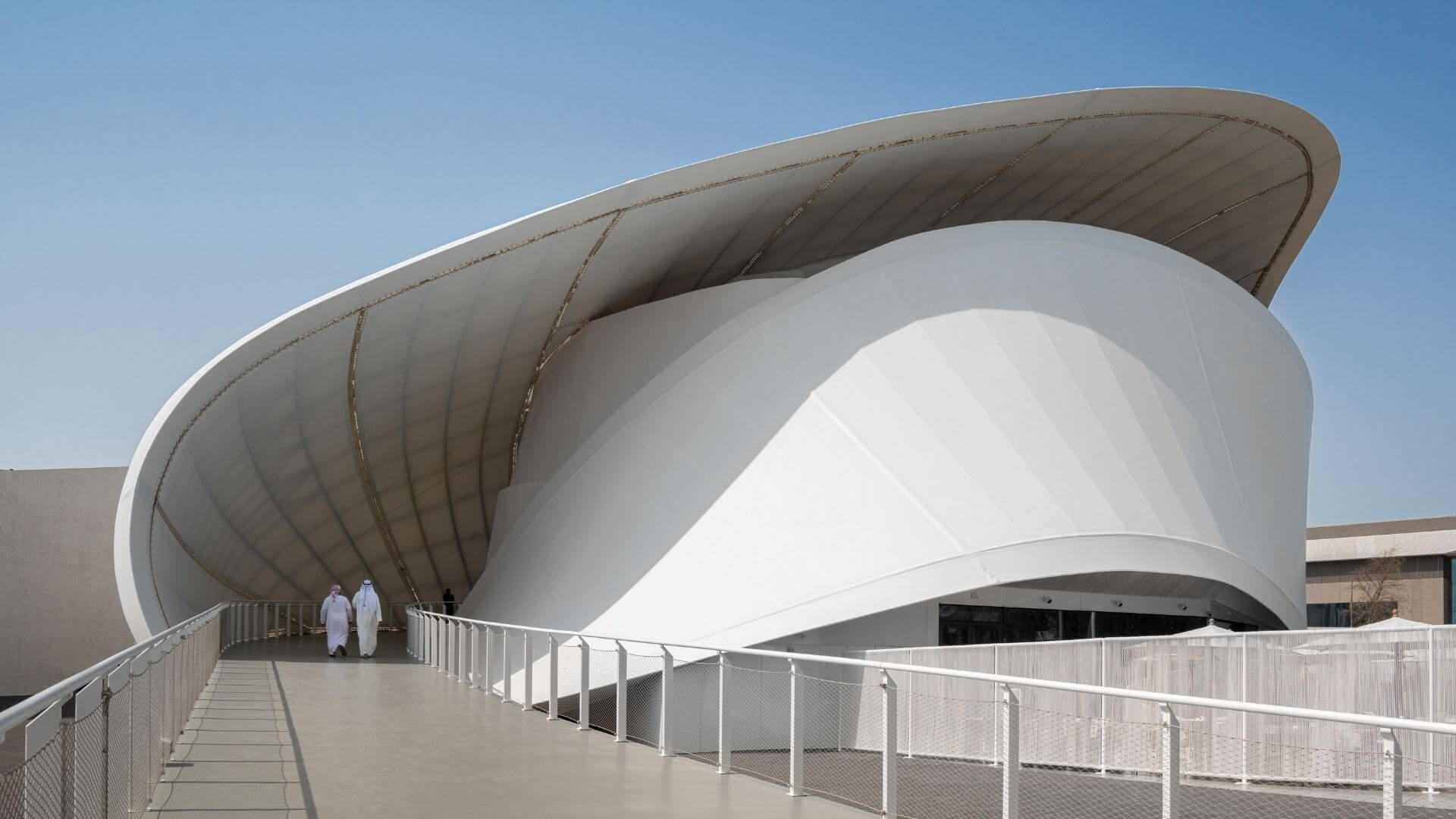GRAU architects: The pavilion invites people to a close experience with nature, focusing visitors' attention on the water reservoir - views, sounds, movements. It forces a person to stop, to slow down thanks to the endless view into the treetops, the defined view of the boundless calm water surface and the gentle closure from the surrounding bustle of everyday life. The interior of the pavilion comfortably accommodates 6 people, sitting face-to-face around the table during the tea ceremony, which gives the ceremony a certain impression of intimacy.
The subtle/light, open construction refers to the traditional Japanese interior but brings modern elements into it. It fits harmoniously and delicately into the surrounding environment. Several rules of the traditional tea ceremony were transferred to the final design. When entering the interior, each visitor must bend down to pass under the lowest horizontal beam of the structure, which refers to the niriji-guchi door, a symbol of the equality of all participants in the ceremony. At the same time, upon entering, a rectifying view opens up attention to the water reservoir.
A low table in the middle of the layout invites visitors to sit on their knees as is customary in Japanese culture. Stiffening of the lower part of the structure with plywood boards provides a feeling of privacy and detachment from exterior noises. The open entrance frame allows a view into the interior and passers-by can see the tea ceremony in progress. The height of the table gives it versatility when used both during the tea ceremony or as a bench offering a place for sitting and quiet contemplation, thus following the Japanese ideology focused on simplicity and aesthetic sophistication.

The table becomes the only central furniture of the pavilion, its depth allows the participants of the ceremony to sit in close proximity with a feeling of mutuality. The pavilion has a multifunctional character and, in addition to the tea ceremony, it can also function as a pleasant summer pavilion with soothing views of nature. The square-shaped floor plan refers to simplicity, and the use of primary elements depicts the symbol of matter and man.
The structure of the pavilion is based on a plan area of 3 x 3 m with a height of 4 m, which is also the structural height of wooden spruce prisms of square cross-section and the maximum permitted height of the pavilion. The raw wooden elements are complemented by a soft fabric that brings a feeling of coziness, but keeps the pavilion still minimalist, so that it does not distract from the ceremony itself, from achieving a sense of peace and harmony. Other materials used are spruce floor planks, birch plywood and roof geotextile.
The mass of the pavilion is based on the shape of traditional tea pavilions. Diagonally fixed fabric together with closing two side walls with birch plywood create an impression of privacy and protection against weather conditions such as sun and rain, which the house provides, but at the same time the frame structure remains airy and open enough to allow a connection with the exterior and the creation of non-traditional views. Textiles in two levels bring a certain play to the pavilion, which is meant to evoke traditional Japanese architecture.























About studio
Architectural studio based in Bratislava, Slovakia, founded in 2014, recently is led by Andrej Olah and Filip Marčák. GRAU works on different scales of projects, from interiors to public buildings. We are always trying to with context in context, do not fake, work with honest materials and approaches. We work from whole to detail, from vision to realisation. We are constantly looking for connection between interior and exterior.





